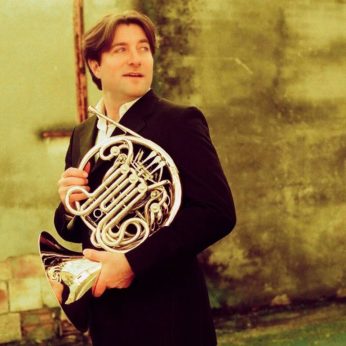Composer: Leoš Janáček (b. 1854 - d. 1928)
Performance date: 04/07/2015
Venue: St. Brendan’s Church
Composition Year: 1924
Duration: 00:17:44
Recording Engineer: Richard McCullough, RTÉ lyric fm
Instrumentation Category:Sextet
Instrumentation Other: fl, ob, cl, bcl, hn, bsn
Artists:
Peter Whelan -
[bassoon]
Hervé Joulain -
[horn]
Mathias Kjøller -
[clarinet]
Romain Guyot -
[clarinet]
Gareth Hulse -
[oboe]
Phillipe Bernold -
[flute]

Janácek hated growing old and took dramatic
steps in his love life to prove to himself that he had the secret of eternal
youth. On his 70th birthday he fled to his country retreat rather
than personally accept the congratulations of all his well-wishers. And so in
July 1924, the month of his birthday he wrote this celebration of youth from
the hand of a 70 year old. The work caused considerable performance problems,
the students, who tried to premiere it, failed to master the notes. At the next
attempt in very cold weather one of the keys in the clarinet jammed on its
transfer to the heated hall and Janácek leaped on stage afterwards to deny the
work and berate the poor clarinettist. The
members of the Czech Philharmonic Orchestra finally got it right.
His
choice of instruments was influenced by hearing the Ensemble de la Société Moderne des Instruments à Vent at the 1923
International Society of Contemporary
Music Festival in
So it is appropriate that half our multi-national sextet comes from
The
first movement is a Rondo, whose
principal theme is related to the speech
rhythms of the phrase Mládí, zlaté mládí!
(Youth, golden youth!).Witty comments by the bass clarinet make sure
nothing is taken too seriously not that there is ever much chance of that. The Andante is a theme with four variations starting in D flat minor. A
sombre start is qualified by some irreverent croaks from the bassoon, which
leads directly into the first variation. Like Mozart, Janácek finds magical
effects, which he tempers with his sense of fun. The movement ends with a
reprise of the theme in D flat major.
The
Scherzo is in A flat minor and the
theme is borrowed from the March of the Blue Boys that he set down earlier
that year from schoolboy memories of a Prussian military band in
described hearing the swirling roll of
the little tin drums and above them the strident tunes of the high piccolos. So for this movement he replaces the flute
with the piccolo. There are two contrasting major key Trios. The Allegro animato is
linked back to the opening movement by the reappearance of the golden youth
theme and the composer’s extraordinary ability to recapture the energy and
happiness of youth.
Copyright © 2024 West Cork Music. All rights reserved.
Designed and developed by Matrix Internet